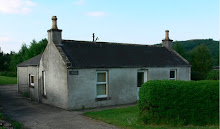 Okay, after disapproving of blog posts that plead for help, I'm going to do it again.
Okay, after disapproving of blog posts that plead for help, I'm going to do it again. The boxes for the A Drink To Us (When We're Both Dead) edition are currently being manufactured. They will be hinged caskets held together with rare-earth magnets, with foil embossing on the front mimicking a heat brand. The verso will have a printed label with some information about the piece that isn't included in the contract. I want to use this image, but I can't find a version at a decent enough resolution. I've come across the picture on three different sites, but always at 288 x 363. It's perfect for so many reasons but I need a crisper, larger image.
Does anyone happen to recognize it? Know what terms one might search to find it (beyond 'dendrology')? Know of a program or a search engine that lets one search using an image as a starting point? (the technology exists, I just don't know where).
When I read that part of the Hitchcock script where Madeleine and Scottie are among the redwoods, she touches the tree rings and says, “Here I was born and here I died. It was only a moment. You took no notice," I got goose-bumps. When it came to shoot that scene, I had goose-bumps. Just touching that old tree was truly moving to me because when you touch these trees, you have such a sense of the passage of time, of history. It’s like you’re touching the essence, the very substance of life. I remember taking my father to see the redwood forest once. He wept and so did I. He ‘got’ it in the same way as I do. We never talked about it. That scene in Vertigo I felt more than any other.
- Kim Novak
And so all you observers
In your scrutiny
Don't count my scars like tree rings
- Vic Chesnutt, Panic Pure

1 comment:
email response -
I'm pretty sure that must be a cross section of a giant sequoia (the only other possibility would be the closely related coast redwood but even they are not usually that big). No idea where that was taken, there are a number of sections that were cut from stumps or logs mostly in the late 1800s/early 1900s and sent to various museums and other places around the country (around the world!).
Post a Comment